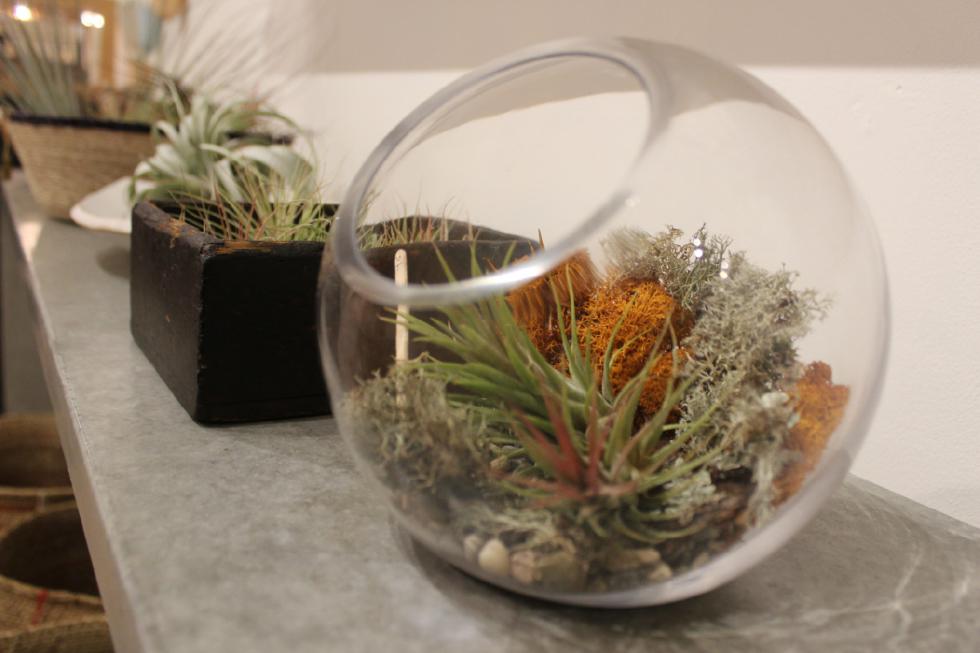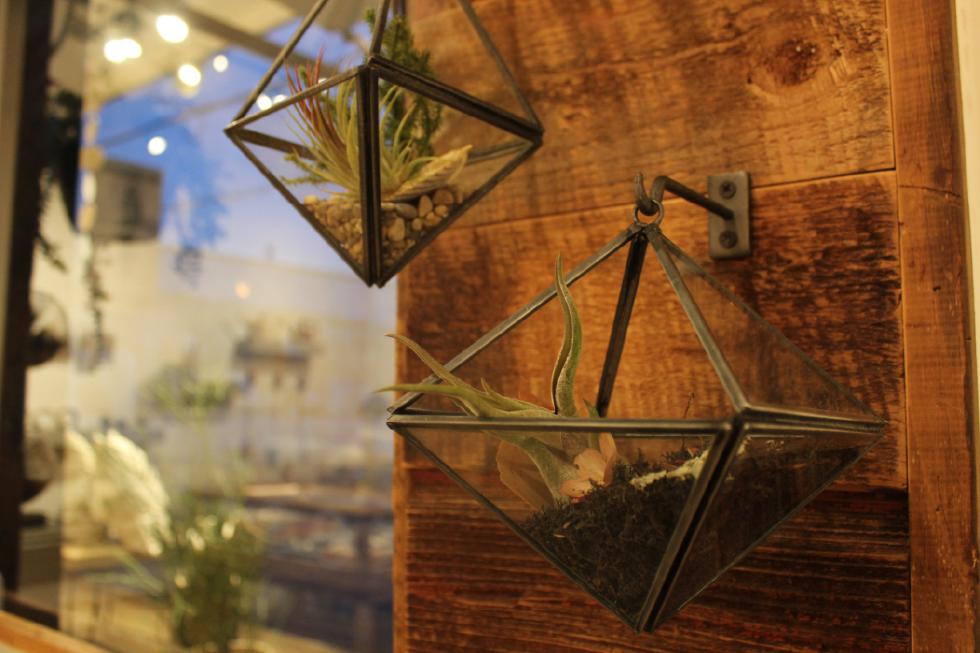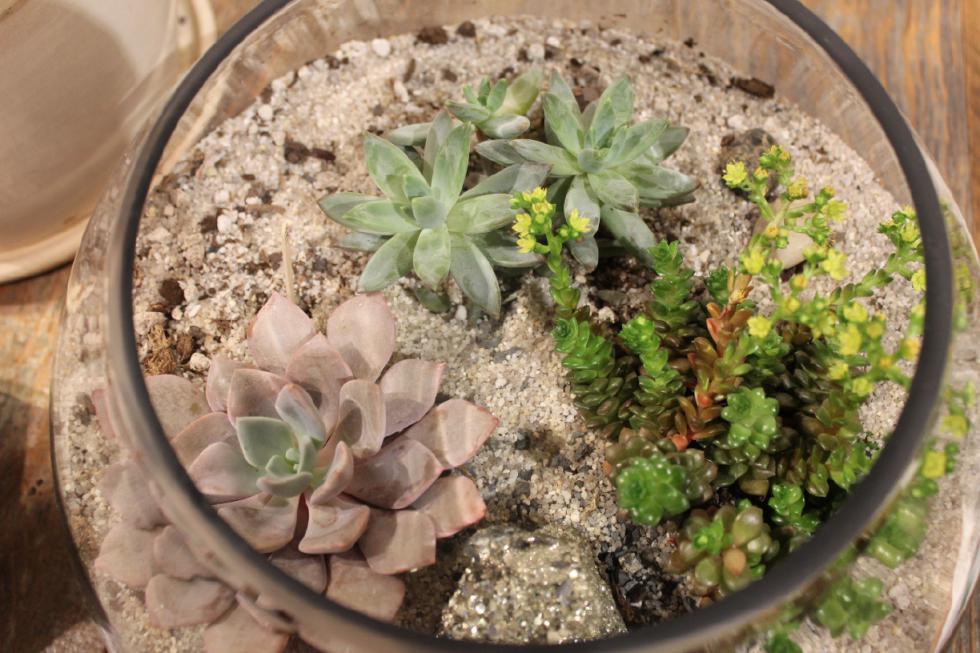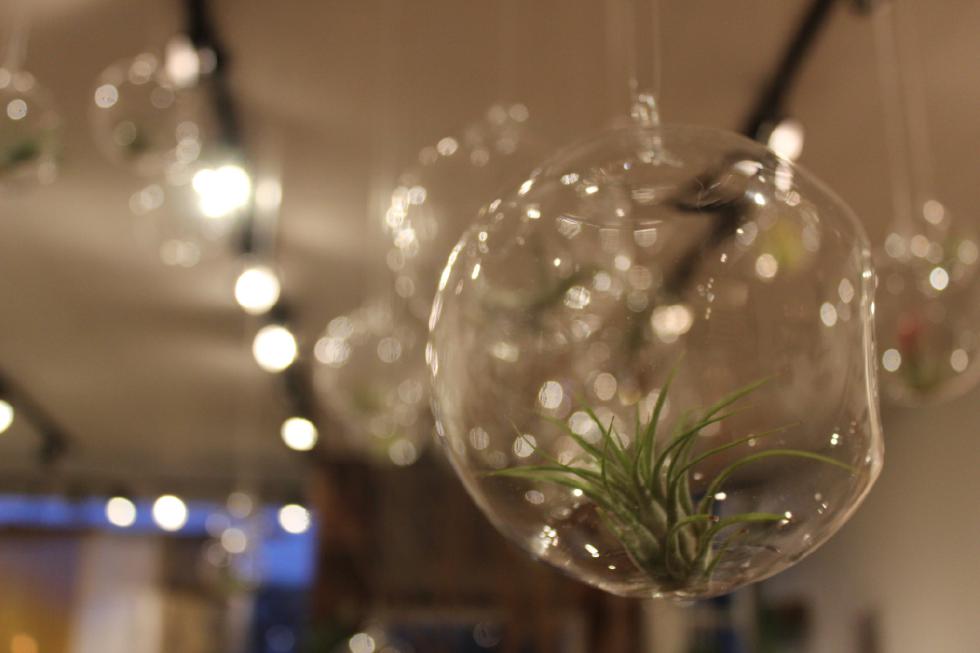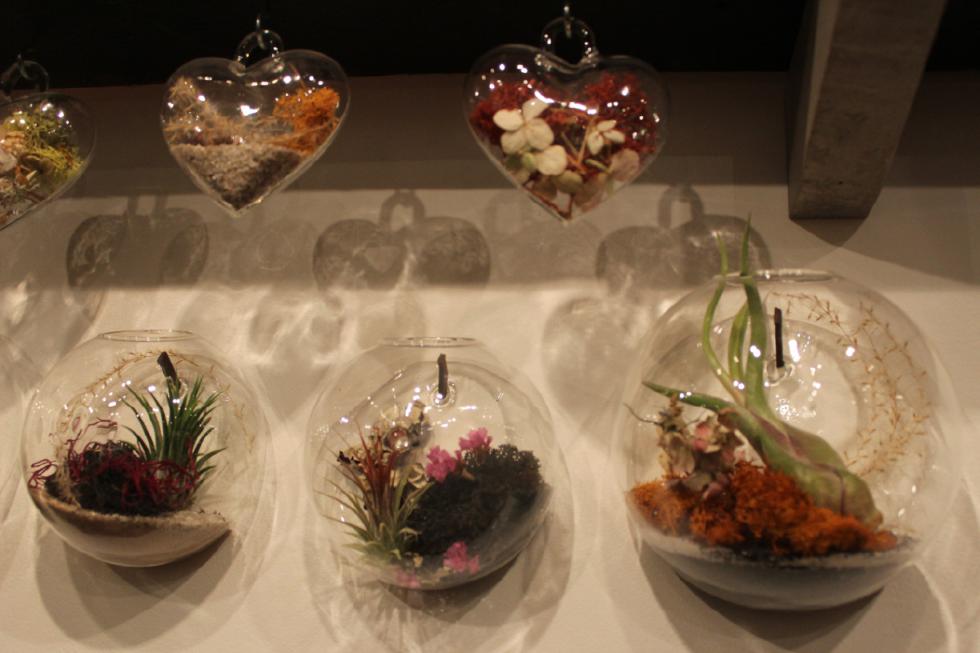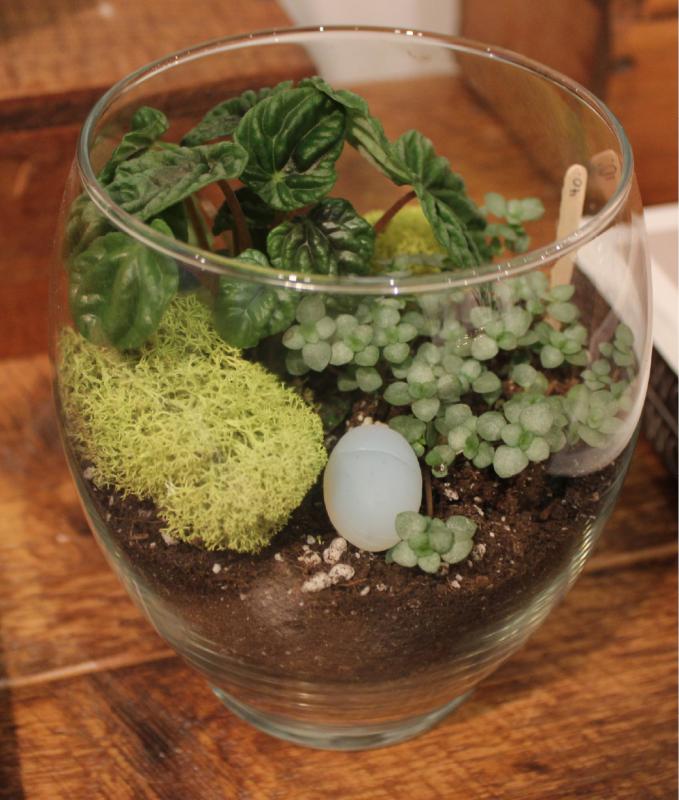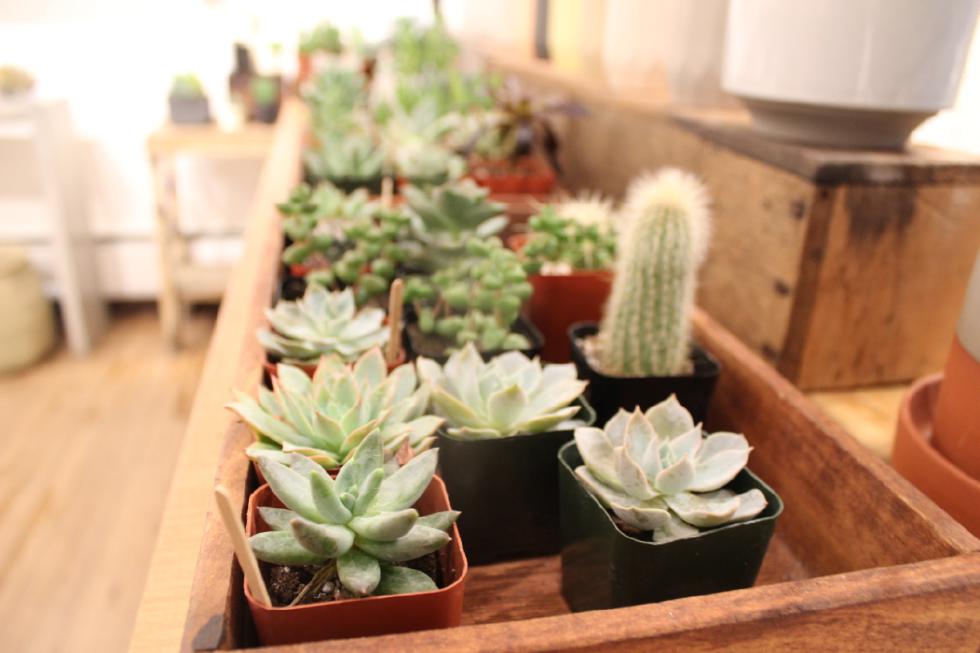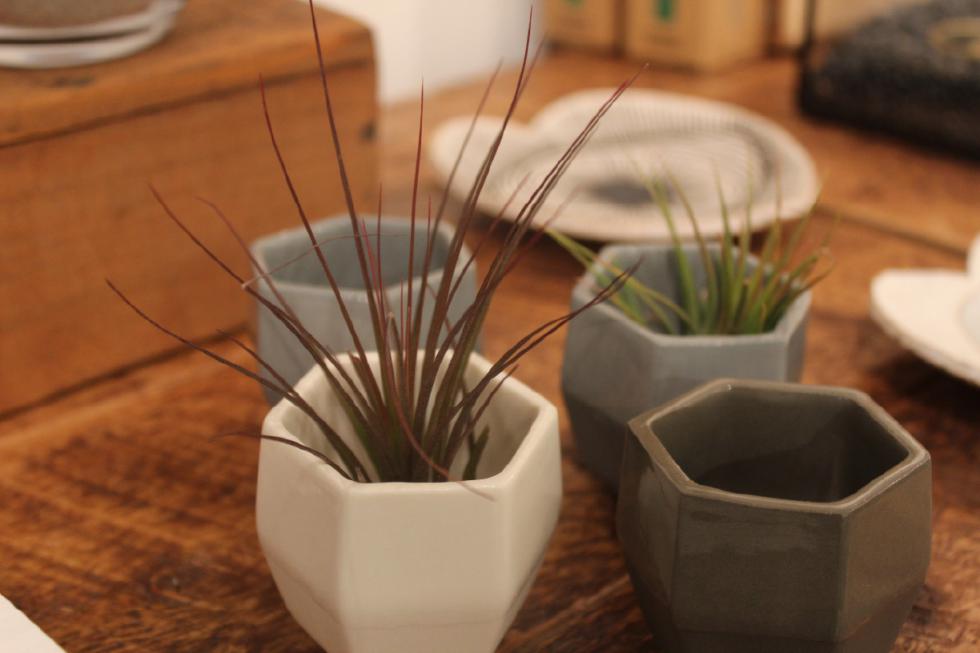Love gardening but can’t do it outside?
Whatever reason you might have for bringing your floriculture indoors, terrariums offer a way to both satisfy a green thumb and fulfill a creative itch. They’re fun to make and, like any other plant added to an enclosed space, they improve air quality in your home. Plus, they’re just pretty to have lying around.
Terrariums are contained ecosystems often housed in transparent containers so that onlookers can enjoy their earthly layers. They typically include a drainage layer on the bottom, soil or sand in between, and are topped with tiny plants and decorative ornaments. Black thumbs have no fear — these babies require only the occasional spritz and very little sun to survive. Terrariums with succulents require even less water, if any at all, but should sit more directly in the sun.
Most things required to make a terrarium you can find on a walk, and the rest you can scrounge from around your home or buy at local home and gardening shops.
If you’re interested in tuning into the terrarium trend, Kestrel in Northampton is a great resource, as the store sells everything needed to make the miniature worlds and is full of real-life examples (some of which are shown above). Kestrel employee Justine Barrett Figura says that building terrariums from the earth up begins with the materials with the smallest particle size. She says to start with rocks and sand on the bottom, then activated charcoal, sphagnum moss, and finally the appropriate dirt for your plant. The shop has a small assortment of plants well-suited to terrarium life that you can purchase for about $5 each, as well as terrarium kits.
Angela Karlovich, greenhouse manager at Hadley Garden Center, says the most important thing to remember about crafting a successful terrarium is to plant like plants together.
Plants that enjoy more moist environments — ferns, mosses, ficuses, palms, and sithonias among them — should be planted in one terrarium and placed near the shower or should be watered more frequently.
Pileas, begonias, and peperomias, she says, belong in a separate terrarium as they like a drier environment.
Drier still, however, should be the terrariums that incorporate cacti and other succulents. These should be placed in direct sunlight, Karlovich says, whereas terrariums containing the aforementioned plants should be placed facing east or west so that they get some sun in the afternoon.
As a notorious plant killer, I decided to ask Barrett Figura about the level of difficulty associated with maintaining these little spheres.
“I find that they’re pretty easy,” she said, adding that incorporating the polka dot plant into your design helps serve as a measure of a terrarium’s need for water, as its leaves have a very obvious wilt when they’re the slightest bit dehydrated.
Aeriums, which require no dirt, are an offshoot of the terrarium trend. These are great for hanging near the shower and forgetting about. You can also hang them in a drier spot and mist them twice a week. Tillandsia, a genus of many types of “airplant,” are ideal for these bulbs as they have no roots and are adept at growing on shifting desert soils.
In any case, says Barrett Figura, terrariums eventually outgrow their small spaces. Consistent pruning can stretch their lifespan, but not indefinitely. “Terrariums are not meant to be forever,” she says. “They will stay little for a while but not forever.”
As part of a movement around adding more green to the home, Karlovich says airplants and other miniature plants have been very popular at the store over the past couple of years.
“It’s fun to manipulate a little environment,” Karlovich says of the terrarium trend. “All house plants seem to be trendy right now.”•
Contact Amanda Drane at adrane@valleyadvocate.com.

